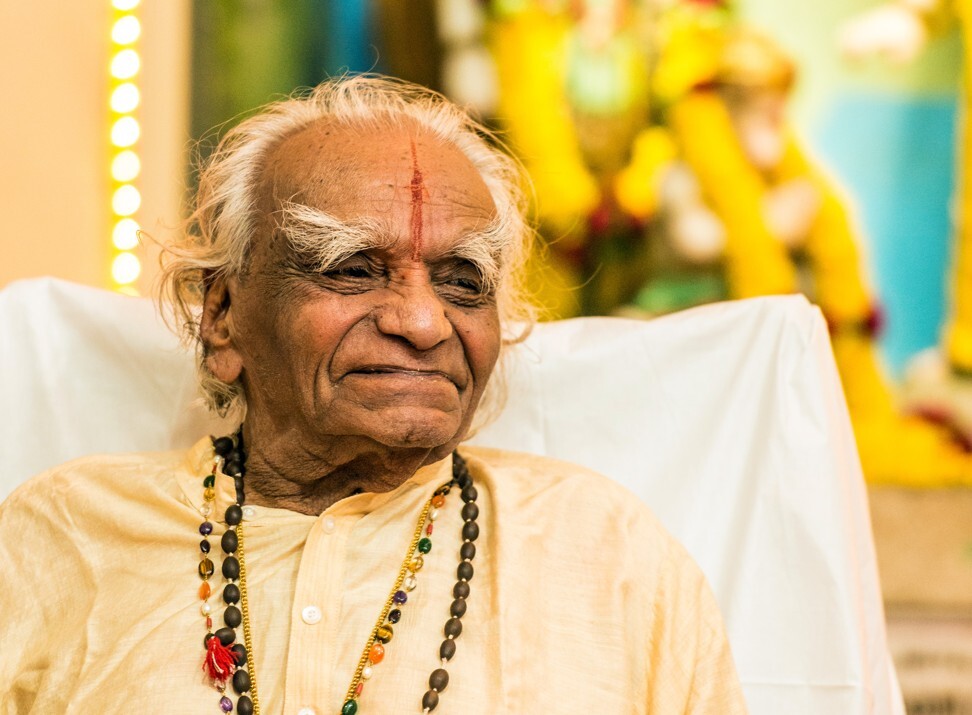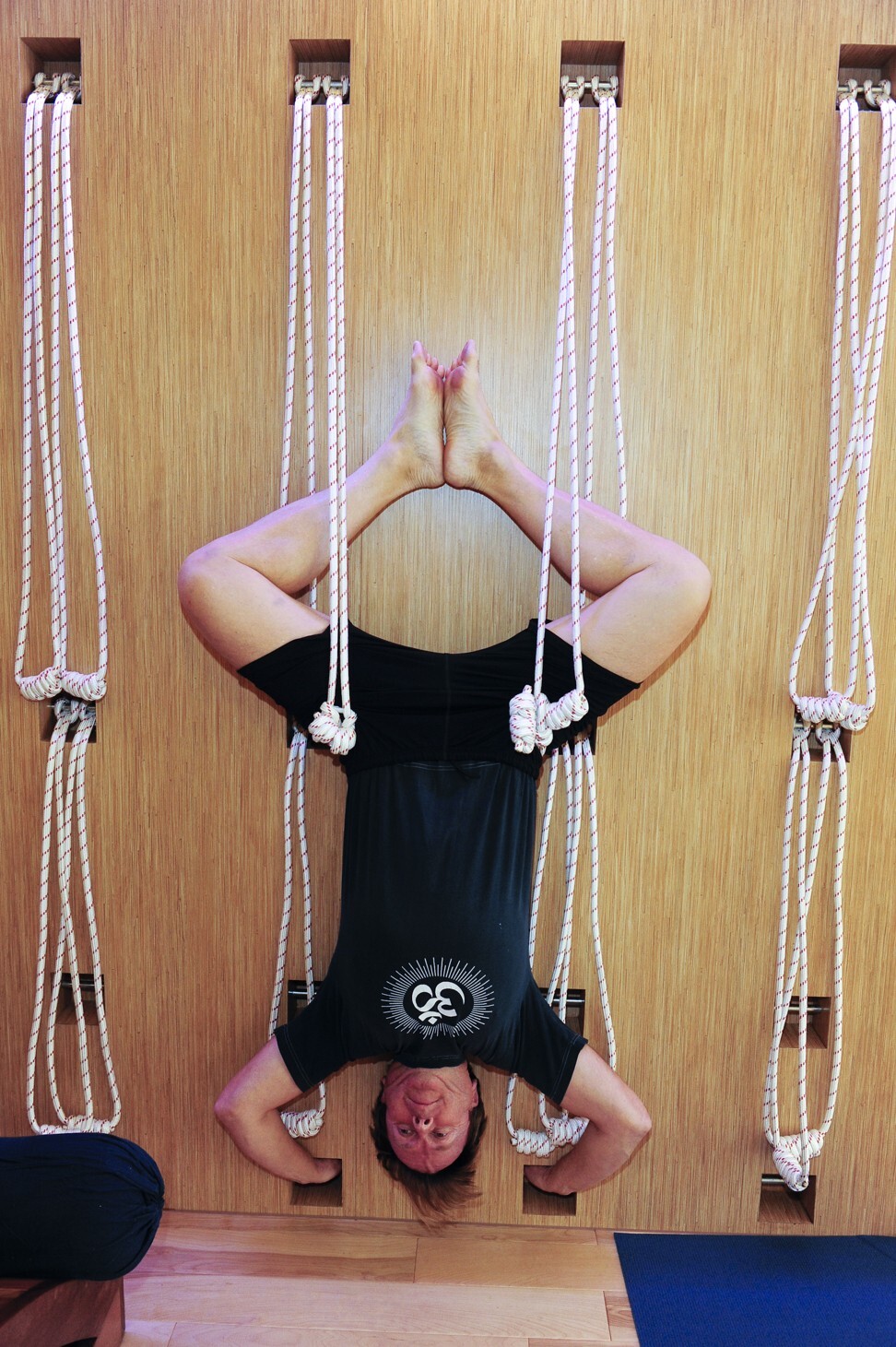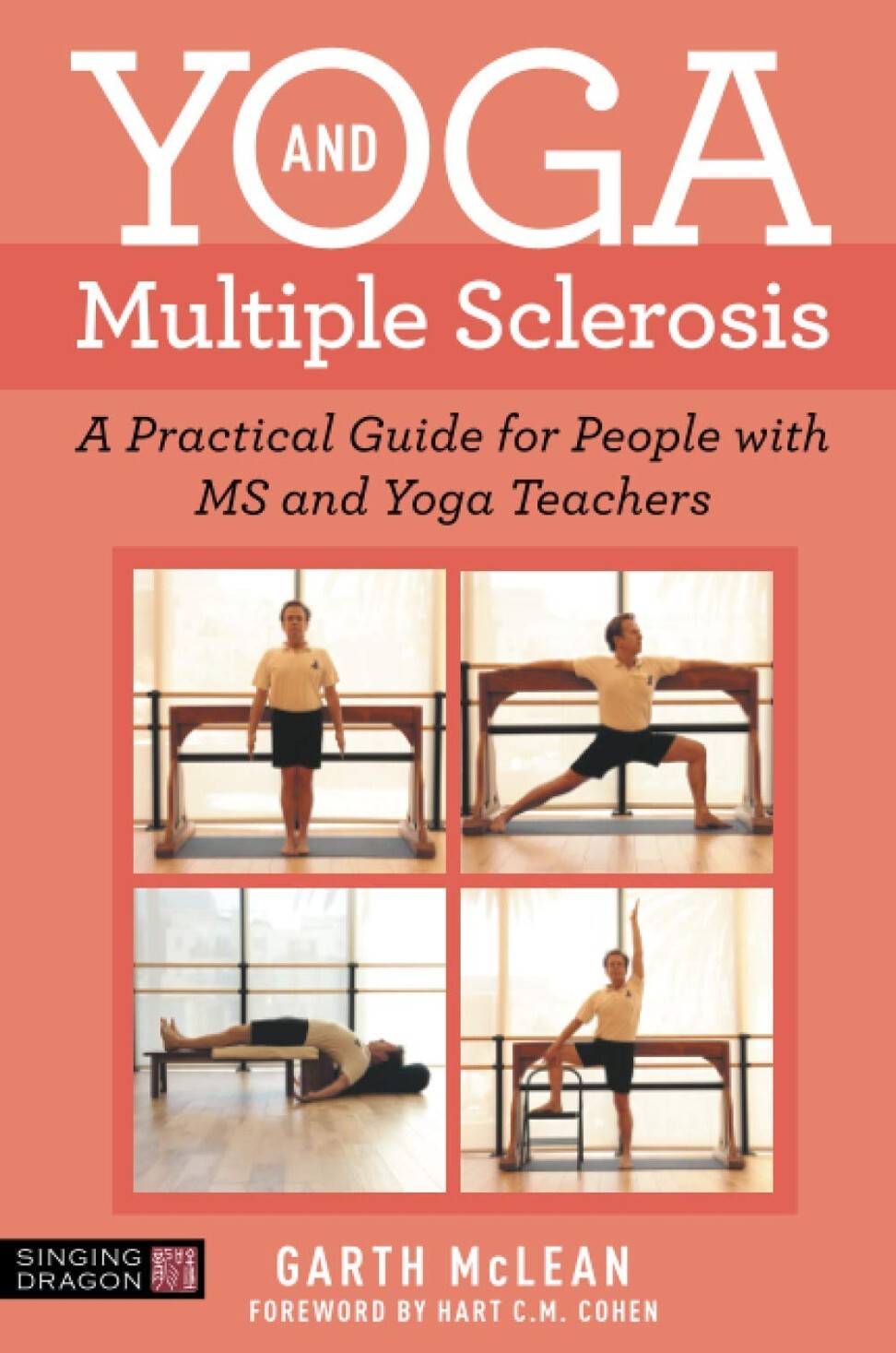
Iyengar yoga helped this man cope with multiple sclerosis. Now he teaches others how to deal with the disorder through yoga
- Garth McLean’s doctor recommended yoga for stress management when he was diagnosed with multiple sclerosis, which is incurable, in his mid-30s
- It helped so much he trained to become a yoga teacher, and now helps others deal with their MS

As an aspiring actor in his mid-30s auditioning for roles in Hollywood, Garth McLean was no stranger to adversity. But he could not imagine the challenge that lay ahead. In the midst of producing a play, he felt a tingling numbness in his right arm. He put it down to a pinched nerve from an earlier gym session, but it soon travelled to his left arm, and within a month his entire body felt numb.
“I was numb from head to toe and was unable to even button my jeans or hold a pen,” recalls McLean. After a battery of tests in a hospital, while he was lying in bed awaiting the results, he thought, ‘What if I can’t feel my body for the rest of my life’?”
He was diagnosed with multiple sclerosis, an autoimmune disorder in which the immune system attacks the central nervous system, leaving scarring on the myelin sheath – the nerves’ protective coating.
Messages from the brain are unable to effectively reach the rest of the body, resulting in loss of balance and co-ordination, limb numbness, chronic leg pain, problems with speech, vision and bladder control, severe fatigue and depression.
“I freaked out,” says McLean. “My doctor explained that multiple sclerosis had no effective cure and had to be managed with medication. He suggested swimming to keep the body cool and yoga to manage the stress.”
Friends recommended he try Iyengar yoga, named after the late Indian yoga master BKS Iyengar.

“I did not want to become dependent on medication and wanted to get to a place of health where I could function relatively well,” says McLean, who registered at the Iyengar Yoga Institute of Los Angeles (IYILA) within 48 hours of being discharged from hospital.
He was about to embark on a journey that would define the rest of his life, first as a yoga student and later as a teacher. Today, 61-year-old McLean is a renowned yoga practitioner, and has been inspiring people afflicted with multiple sclerosis acros the world for the past two decades.
“My first teacher, the late Karin O’Bannon, was encouraging, but also strict in a compassionate way. I was having difficulty lifting my legs, controlling my fingers, bladder and bowels, and could not walk properly. With the use of props such as the trestle (a horizontal cross beam supported by two pairs of sloping legs), bricks and the ropes, I was able to do several of the poses.
“I did sirsasana [headstand] hanging in the ropes on the first day and felt great. Karin opened the door of possibilities for me,” says McLean.
Within two weeks and with dedicated practice, the numbness in McLean’s body gave way to sensations. “I was able to walk again,” he says. He made a firm commitment to practise yoga every day.
George Dovas is head teacher at the Iyengar Yoga Centre of Hong Kong, and has been using McLean’s guidelines to work with students with multiple sclerosis in the city.
“Iyengar yoga is particularly helpful for people with multiple sclerosis because of the use of props and a focus on alignment. The props enable a person to position the body in a way that they may not be able to on their own, and together with proper sequencing of the postures helps stimulate the nervous system, reduce fatigue and provide deep rest,” says the 46-year-old.

McLean elaborates: “If we align the body in asanas [poses] correctly, the muscle and nerve fibres are nourished and begin to work again, and the body is given a chance to heal itself. Iyengar taught that yoga teaches us to cure what need not be endured and endure what cannot be cured. I have found that to be true.”
McLean has what is called relapsing-remitting multiple sclerosis, characterised by periods of remission, followed by relapses. In 2001, he lost his eyesight for 11 weeks. Two months later, he lost feeling from his navel down. Fearing the condition was progressing, he managed the relapses with temporary medication and through yoga.
Once he recovered, he committed to a daily yoga practice instead of taking immunosuppressant medications. He has been in remission since 2001 and medication-free for 17 years.
The profound impact of Iyengar yoga on McLean’s life inspired him to help others. “I wanted to help people fight the sense of despondency that I had felt. I felt it was my dharma, my duty,” says McLean, who trained for three years and became a certified Iyengar yoga teacher in 2001.
He travelled to Pune, India, to meet Iyengar in 2000, and has been returning every year since to study and practice yoga. “I was excited and apprehensive to meet the great yoga master,” he says.
“When I told Mr Iyengar about my journey, he replied, ‘Every day you must walk that fine line between courage and caution.’ His words continue to guide me in my daily practice.”
Every morning, McLean summons the courage to take action and is cautious, respecting how his body is feeling.
He finds inversions – the upside-down poses – helpful, and practises them for at least 30 minutes daily. He also includes standing poses, forward bends and arm balances.

“Iyengar yoga is not a cure for multiple sclerosis. Rather, it is a wellness strategy that may help relieve symptoms, enhance functionality and prevent or delay disease progression,” says McLean, who stresses that he still follows his doctors’ advice. That includes having an annual MRI scan to monitor the lesions on his brain and spine.
“When we compared the MRI scans of 2005 with 2001, and 2012 with 2011, the lesions on my brain had reduced in number and size and there was no abnormal activity, which my doctors say is remarkable for someone on no medication,” he says.
“Witnessing Garth’s successful use of Iyengar yoga to manage his symptoms during the course of multiple sclerosis has been compelling and inspiring,” says Dr Hart Cohen, a neurologist in Los Angeles, California who has been McLean’s doctor since 2001.
“I have seen how his practice of yoga has built his strength, kept him mobile and even slowed the progression of physical problems during the course of the disease.”
In 2011, McLean co-founded Iyengar Yoga Therapeutics, a non-profit based in Los Angeles to help people maintain their health through yoga.
In 2016 he wrote, produced and acted in a one-man play, titled Looking for Lightning, about his journey with yoga and multiple sclerosis, which premiered in Los Angeles and which he performed at the 2018 Edinburgh Fringe Festival in the UK.
McLean has just published his first book, Yoga and Multiple Sclerosis – A Practical Guide for People with MS and Yoga Teachers, to help others with MS, and as a tribute to his guru. It is due out this month.
.